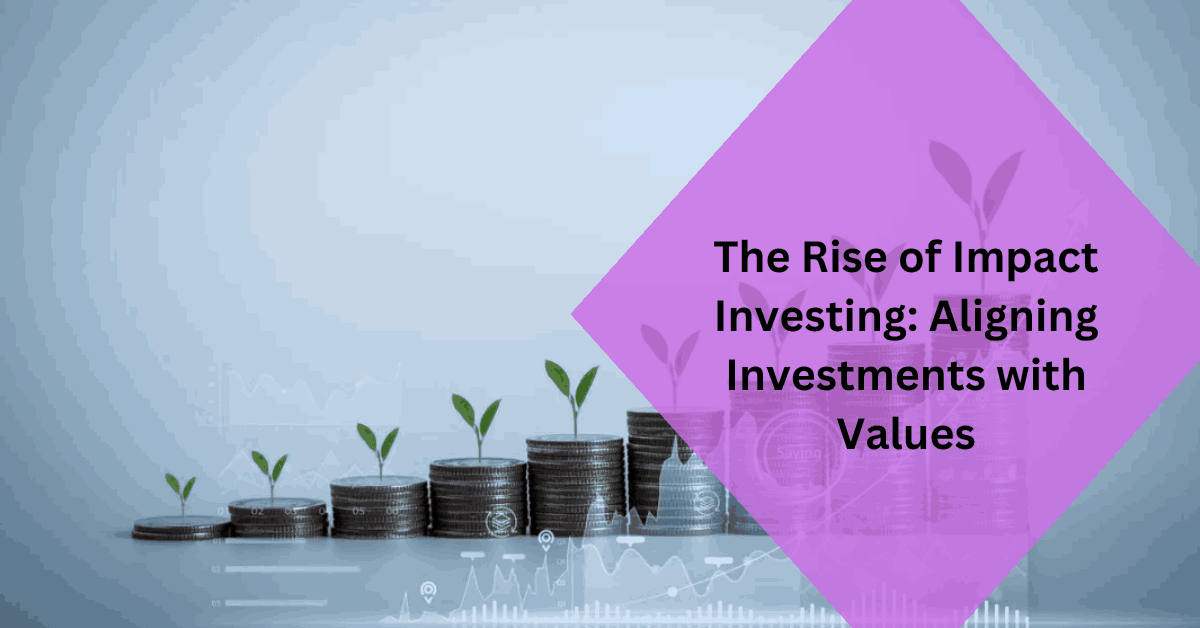The Rise of Impact Investing: Aligning Investments with Values
In recent years, there has been a notable shift in the investment landscape as more individuals and institutions seek to align their financial goals with positive social and environmental impact.
This growing trend is known as impact investing, where the intention is not only to generate financial returns but also to contribute to positive change in the world.
Let’s explore the rise of impact investing and its significance in aligning investments with values.
Table of Contents
1. Defining Impact Investing:
Impact investing goes beyond traditional investment strategies by incorporating environmental, social, and governance (ESG) criteria into decision-making. The goal is to generate measurable, positive impact alongside financial returns. Impact investors actively seek opportunities to support projects, businesses, or initiatives that contribute to sustainable development goals.
2. Measuring Social and Environmental Impact:
One of the defining features of impact investing is the emphasis on measurable impact. Investors set specific criteria and metrics to assess the social and environmental outcomes of their investments. This approach allows for transparency and accountability, ensuring that the intended impact is achieved.
3. Diverse Investment Sectors:
Impact investing spans a wide range of sectors, including renewable energy, affordable housing, healthcare, education, and social enterprises. Investors can choose areas that resonate with their values, creating a diverse portfolio that reflects a commitment to positive societal and environmental change.
4. Financial Returns and Impact:
Contrary to a common misconception, impact investing does not require sacrificing financial returns. Many impact investments aim for market-rate or competitive returns while delivering positive outcomes for people and the planet. The goal is to demonstrate that financial success and positive impact can coexist.
5. Impact Investment Vehicles:
Impact investors can deploy capital through various vehicles, including private equity, venture capital, fixed-income securities, and sustainable funds. These vehicles allow investors to tailor their portfolios to specific impact themes or sectors while maintaining liquidity and risk profiles that align with their financial goals.
6. Institutional and Retail Participation:
While institutional investors have traditionally been leaders in impact investing, there is a growing trend of retail investors actively seeking impact-oriented investment opportunities. Financial institutions and wealth managers are responding to this demand by offering impact investment products accessible to a broader range of investors.
7. Corporate Social Responsibility (CSR) and ESG Integration:
Impact investing is closely tied to corporate social responsibility and the integration of ESG factors into business practices. Companies are increasingly recognizing the importance of aligning their operations with sustainability goals to attract impact investors and enhance their overall reputation.
8. Alignment with Sustainable Development Goals (SDGs):
Impact investing often aligns with the United Nations’ Sustainable Development Goals (SDGs). These global goals address challenges such as poverty, inequality, climate change, and environmental degradation. Impact investors actively seek opportunities that contribute to achieving these broader societal objectives.
9. Community Engagement and Empowerment:
Many impact investments prioritize community engagement and empowerment. This involves working closely with local communities to understand their needs, involve them in decision-making processes, and ensure that the impact generated is inclusive and sustainable.
10. Challenges and Opportunities:
While impact investing is gaining momentum, it faces challenges such as the need for standardized impact metrics, regulatory clarity, and addressing potential greenwashing. However, these challenges also present opportunities for collaboration, innovation, and the development of frameworks that strengthen the impact investing ecosystem.
11. Educational Initiatives and Advocacy:
As impact investing continues to grow, educational initiatives and advocacy play vital roles. Investors and organizations are working to raise awareness, build capacity, and advocate for policies that support the integration of impact considerations into mainstream investment practices.
Conclusion:
The rise of impact investing signifies a broader shift in the investment paradigm—one that recognizes the interconnectedness of financial success and societal well-being. As investors increasingly prioritize aligning their values with their portfolios, impact investing has the potential to drive positive change on a global scale. By channeling capital towards sustainable and impactful initiatives, impact investors contribute to building a more equitable, resilient, and environmentally conscious future. As this trend continues to evolve, impact investing is likely to play a pivotal role in shaping the future of finance and fostering a more sustainable and inclusive global economy.

